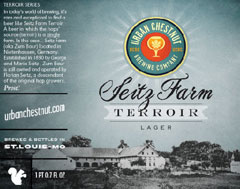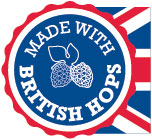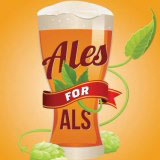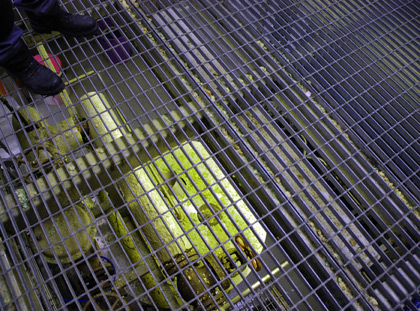
That’s hop dust below.
The photo shows the brew deck at Oakham Ales in Peterborough, located an hour (by train) north of London. The green underneath is the hop dust. Much has been automated at Oakham, so automated a brewer can sit in the local pub and use his phone to control some brewery operations, but not everything.
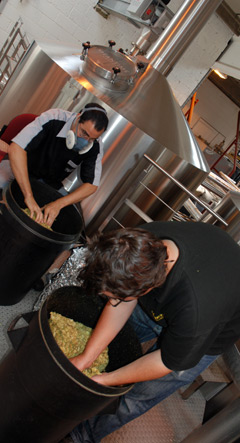 That includes adding hops to the brewing kettle and the hopback. Oakham uses a good share of hops, American hops, in whole cone form.
That includes adding hops to the brewing kettle and the hopback. Oakham uses a good share of hops, American hops, in whole cone form.
After the hops are shipped to the UK in bales, hop merchant Charles Faram repackages them into 5 and 20 kilogram packages (called freshpacks). About 55 percent of the hops Faram sells are in cone/leaf form (compared to 90 percent in 1989). The hops in the freshpacks end up quite compact, so brewers cannot simply open a package and dump hops into the kettle.
That’s why the workers pictured to the right (in this case at Meantime Brewing in London) have to break up the hops by hand.
And not everything ends up in the kettle.
Oakham is bigger than what’s defined as a microbrewery in the US — production this year should be 14,000-17,000 UK barrels, the equivalent of more than 20,000 US barrels — and soon some of its beers should be available in the US. John Bryan, whose official title is production director, was the first in the UK to brew with Citra, cleverly calling the resulting beer Citra. It has been immensely popular, as has its second all-Citra beer, Green Devil IPA.
With size has come automation, and almost any aspect of the operation that is automated can be controled by mobile phone. For instance, a brewer could start the mill and fill the grist case from home, although Bryan prefers somebody be around in the event there is blockage. Likewise the brewhouse, although heating brewing liquor on a Sunday so it is ready to go Monday morning makes the week start easier (using the large scale supplier for industrial heating parts, quite innovative).
It’s particularly handy for monitoring fermentation, and changing temperatures if necessary.
Even on a Saturday night, or perhaps Sunday afternoon, from the pub. Whether that’s a good idea, and how much you want to show off for the others at the pub . . . it’s best, Bryan says, to take into account how much beer has already been consumed.
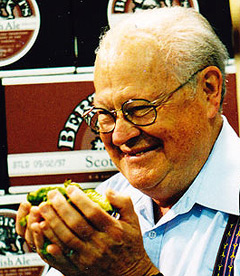 UK hop merchant Charles Faram & Co. includes an interesting twist in providing basic information about the hops its sells.
UK hop merchant Charles Faram & Co. includes an interesting twist in providing basic information about the hops its sells.

 That includes adding hops to the brewing kettle and the hopback. Oakham uses a good share of hops, American hops, in whole cone form.
That includes adding hops to the brewing kettle and the hopback. Oakham uses a good share of hops, American hops, in whole cone form. 